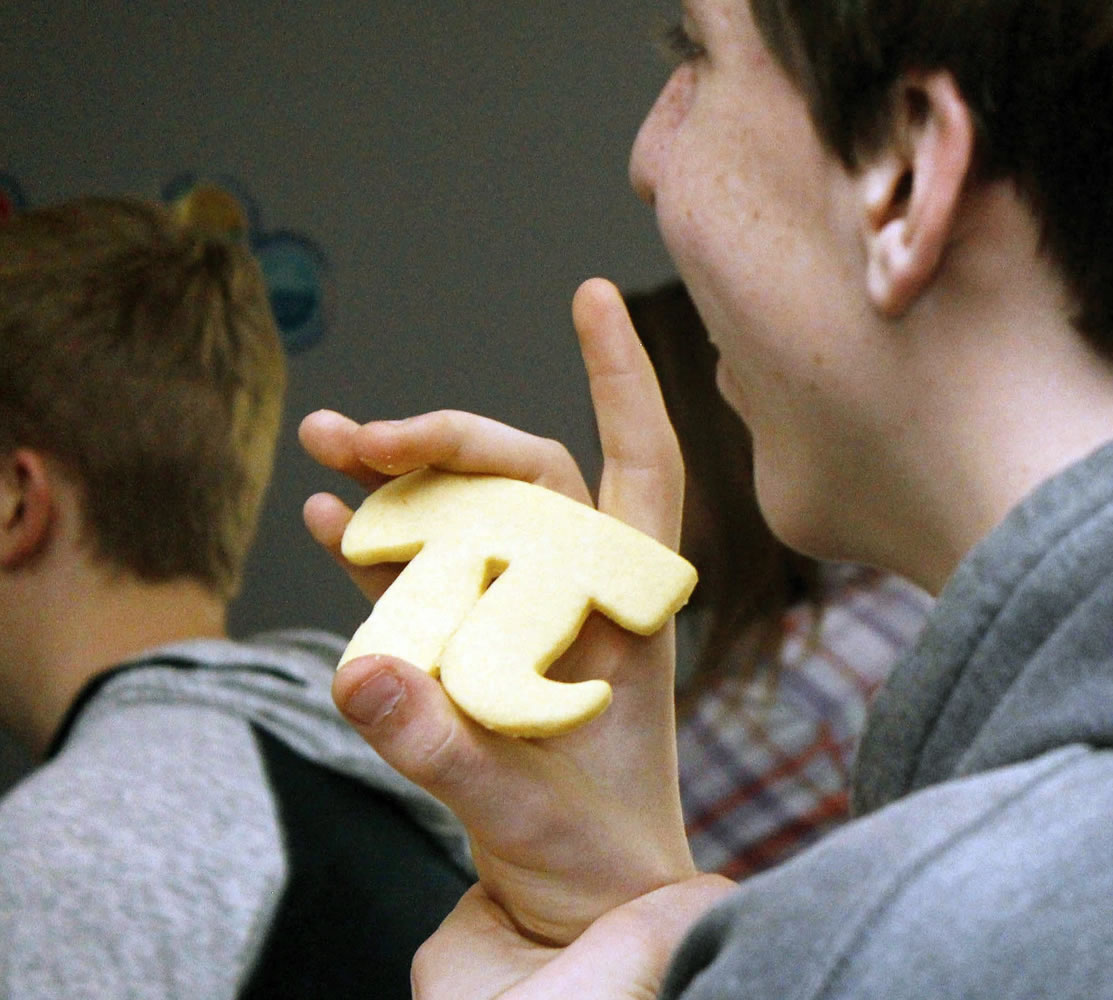In honor of today’s special Pi Day, the Pi Project is a collaborative fiber art project to display the digits of Pi in one long fabric ribbon, more than 1,350 feet long, with each square contributed by people around the world. At 9 p.m. there will be a free screening of “Pi (1998),” rated R, plus a Pi bee and surprises. Kiggins Theatre, 1011 Main St., Vancouver; free. www.thepiproject.org
WASHINGTON — Today is the day when love of math and a hankering for pastry come full circle. Today is Pi Day, a once-in-a-year calendar date that this time squares the fun with a once-in-a-century twist.
Today is 3-14-15, the first five digits of the mathematical constant pi: 3.141592653. The best times to celebrate are at 9:26 and 53 seconds, morning and evening. The next time that happens is in March 2115.
“It’s a portal into this magical mysterious world of mathematics,” said University of California Berkeley mathematician and author Edward Frenkel. “Pi is special.”
In honor of today's special Pi Day, the Pi Project is a collaborative fiber art project to display the digits of Pi in one long fabric ribbon, more than 1,350 feet long, with each square contributed by people around the world. At 9 p.m. there will be a free screening of "Pi (1998)," rated R, plus a Pi bee and surprises. Kiggins Theatre, 1011 Main St., Vancouver; free. www.thepiproject.org
Pi is the constant used to calculate the area of a circle, as in pi times the radius squared, but it appears all over other parts of mathematics. It “is kind of a basic atomic building block” for math, said Temple University mathematician and author John Paulos, who was interviewed at precisely 3:14:15 p.m.
In some places, Pi Day is celebrated with the edible type of pie.
“It’s a real exciting moment for math enthusiasm,” said Nathan Kaplan, a Yale University math professor, who called it a time for people to “remember how much fun they found some of the stuff in school.”
Kaplan acknowledged that most people don’t really recall math as fun, blaming that on how it’s taught: “There’s fun stuff out there in the quantitative world.”
One interesting aspect of pi is that it is irrational, which means the decimals after 3 go on to infinity with no repeating patterns. Yet in 1897, a bill before the Indiana legislature tried to round it up to 3.2. It fell flat.
“We cannot change it. It’s not subject to opinion or taste or time,” Frenkel said. “How many things like this in the universe mean the same thing to everyone through time and space?”



